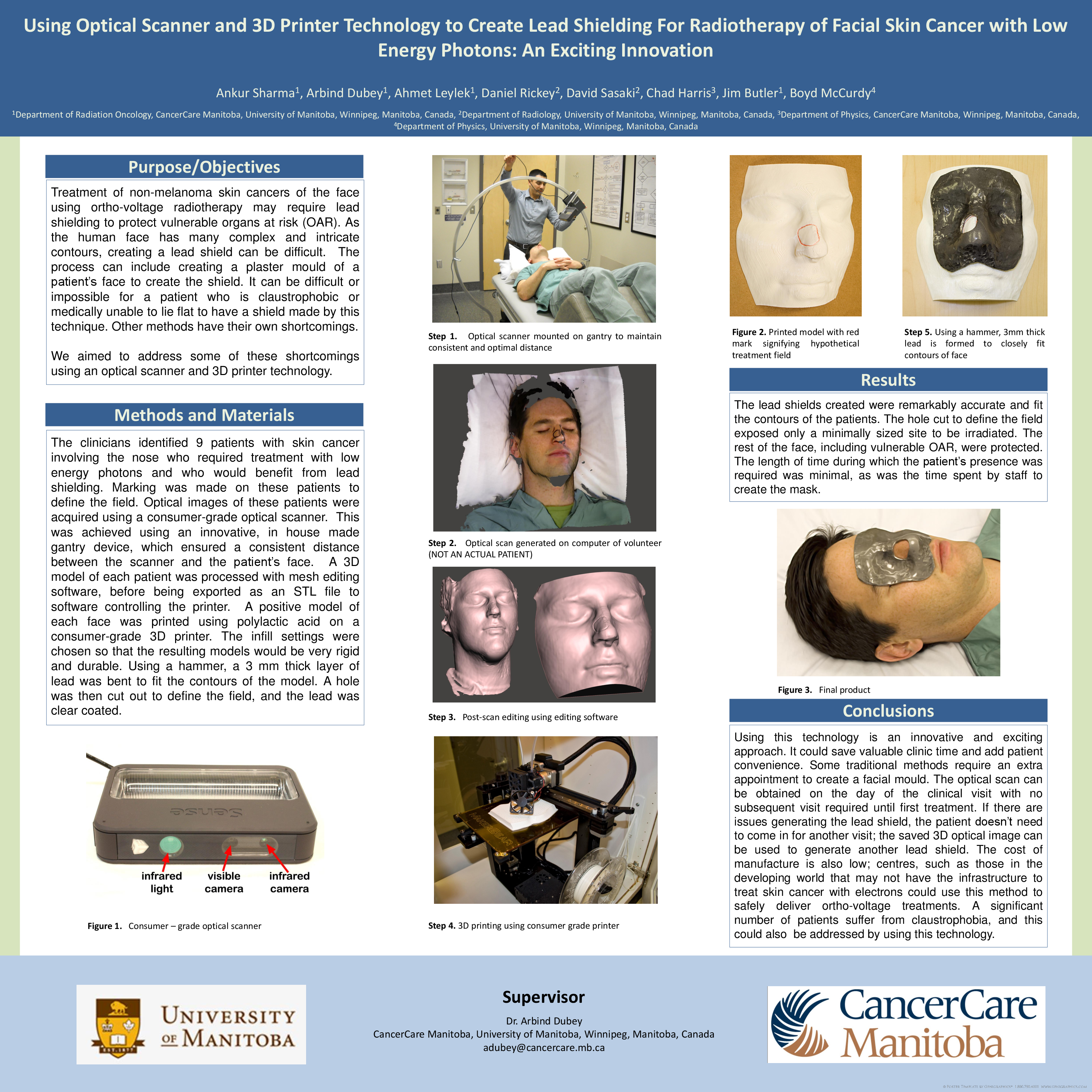Abstract
PURPOSE/OBJECTIVES
Treatment of non-melanoma skin cancers of the face using ortho-voltage radiotherapy may require lead shielding to protect vulnerable organs at risk (OAR). As the human face has many complex and intricate contours, creating a lead shield can be difficult. The process can include creating a plaster mould of a patient’s face to create the shield. It can be difficult or impossible for a patient who is claustrophobic or medically unable to lie flat to have a shield made by this technique. Other methods have their own shortcomings. We aimed to address some of these issues using an optical scanner and 3D printer technology.
MATERIALS/METHODS
The clinicians identified 3 patients with skin cancer involving the nose who required treatment with low energy photons and would benefit from lead shielding. Marking was made on these patients to define the field. Optical images of these patients were acquired using a consumer-grade optical scanner (3D Systems, Sense). A 3D model of each patient was processed with mesh editing software (Autodesk, MeshMixer v2.9) before being exported as an STL file to software controlling the printer (Repetier-Host). A positive model of each face was printed using polylactic acid on a consumer-grade 3D printer (MakerGear, M2). The infill settings were chosen so that the resulting models would be very rigid and durable. Using a hammer, a 3 mm thick, layer of lead was bent to fit the contours of the model. A hole was then cut out to define the field, and the lead was clear coated.
RESULTS
The lead shields created were remarkably accurate and fit the contours of the patients. The hole cut to define the field exposed only a minimally sized site to be irradiated. The rest of the face, including vulnerable OAR, were protected. The length of time during which the patient’s presence was required was minimal, as was the time spent by staff to create the mask.
CONCLUSION
Using this technology to create lead shielding for radiotherapy of skin cancer of the face is an innovative and exciting approach. This could save valuable clinic time and add patient convenience. Some traditional methods require an extra appointment to create a facial mould. The optical scan can be obtained on the day of the clinical visit with no subsequent visit required until first treatment. If there are issues generating the lead shield the patient doesn’t need to come in for another visit; the saved 3D optical image can be used to generate another lead shield. The cost of manufacture is also low; centres, such as those in the developing world that may not have the infrastructure to treat skin cancer with electrons could use this method to safely deliver ortho-voltage treatments. A significant number of patients suffer from claustrophobia, and this could be addressed by using this technology






